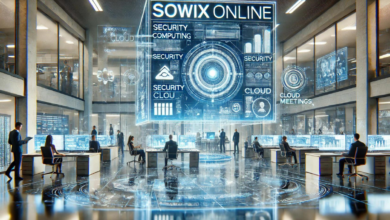Proven Strategies for Project Management Excellence

Project management is a critical process that requires a strategic approach and rich expertise. With the rise of new technological demands, there is the added pressure to ensure all teams are on board and well-educated.
Hence, to ensure that projects are completed on time, within scope, and on budget, managers need to deploy a holistic approach.
Let’s take a look at how this can be achieved.
The Project Lifecycle Conundrums
A thorough understanding of the project lifecycle is the very basis of excellent project management. The lifecycle typically includes initiation, planning, execution, monitoring, and closure, with each phase consisting of its own tasks and deliverables.
Initiation Phase
The initiation phase requires managers to define the project and secure authorization. Typical activities of this stage include developing a project charter, identifying stakeholders, and defining initial objectives.
The better the initiation phase, the better the detailed planning of the following stages will be.
Planning Phase
The planning phase portends developing detailed project plans. These should take into consideration the execution and control phases.
Basically, it’s all about defining scope, schedule, budget, quality requirements, and risk management plans. A solid plan will help teams working on the project to stay aligned and focused on objectives.
Execution and Monitoring
The execution phase is rooted in coordinating people and resources. The monitoring phase tracks progress.
During these phases, managers should ensure that teams are being regularly updated. They should keep an eye on performance metrics and assess risks on an as-needed basis.
Closure Phase
The closure phase is the formal completion of the project. It should ensure that all aspects of the project are finalized satisfactorily.
Also, there are a couple of other activities to keep in mind during this stage: the handover of final deliverables, project documentation, and post-project reviews.
Setting Clear Objectives
One of the most important elements of effective management is setting clear objectives. Defining the project scope by taking into account goals, deadlines, milestones, and potential risks is the right way to go about it.
To meet project deadlines, managers should define clear, concise, and measurable objectives and make sure that all team members understand them. Objectives need to be aligned with organizational goals; that’s why setting SMART (Specific, Measurable, Achievable, Relevant, Time-bound) goals is recommended.
To define the project scope, managers should outline project elements, specifically what is to be included in and what is to be excluded from the project. This will ensure that no time is being wasted on insignificant milestones and enhance team focus.
A scope statement that details a Work Breakdown Structure (WBS) to break down the project into manageable components is highly recommended.
Managing Changes
Despite meticulous planning, changes are bound to happen. To begin with, the majority of projects typically face unanticipated challenges, which is why effective change management needs to be established. Essential job management software can help this process significantly, so make sure to keep an eye on the project development.
In addition, establish a robust change control process. Typically, the process should include a request submission, impact analysis, review and approval, implementation planning, clear communication throughout the change management process, monitoring, and control.
Several tools and techniques can aid in effective change management, including a centralized change request log, impact assessment tools, and workflow automation. Ensure that all project documents are up to date and accessible to everyone involved.
Effective Communication
Effective communication is the single most important element that influences company success on a large scale, let alone project management alone. Since miscommunication typically leads to misunderstandings, conflicts, and project delays, managers need to be extremely skillful in this department.
Continuous internal communication ensures that all team members and stakeholders understand the project goals, expectations, and their individual roles. All efforts should be well-aligned, so managers should coordinate them.
Finally, effective communication is critical for conflict resolution. Addressing issues as they arise prevents them from escalating and consequently endangering project progress.
Managers should make sure to engage stakeholders so that they can provide valuable input. Stakeholders can include team members, clients, sponsors, and other interested parties, so managers need to understand their needs and interests. The finest of managers develop a stakeholder engagement plan, which details when stakeholders will be communicated with and establish regular feedback sessions.
Risk Management
Finally, managers should look into performance management ideas to keep risks at a minimum. Risk management is a critical component of project management, and involves identifying, assessing, and mitigating potential risks.
The first step in risk management is risk identification. Typically, this is done through brainstorming sessions, expert consultations, and historical data analysis.
The next step is risk assessment. Once risks are identified, they need to be assessed promptly. It’s critical to understand how they can impact the project by evaluating the severity and likelihood of each risk.
Based on this analysis, managers should proceed to develop risk mitigation strategies. Typically, these include avoiding, transferring, accepting, or reducing risks. Regular risk monitoring ensures that new risks are managed promptly according to a pre-defined strategy.
Avoiding risks involves changing the project plan to eliminate the risk. Transferring risks shifts the impact of a risk to a third party. Accepting risks may be suitable for low-priority risks. Reducing risks may involve additional quality checks or adding contingency time to the project schedule.
Overall, project management excellence relies heavily on the holistic approach managers deploy. Make sure to understand the project lifecycle, set clear objectives, maintain effective communication, and manage risks efficiently. Use new tech to help you with this goal.
You May Also Read: Protections for Whistleblowers: Safeguarding Integrity in the Workplace




